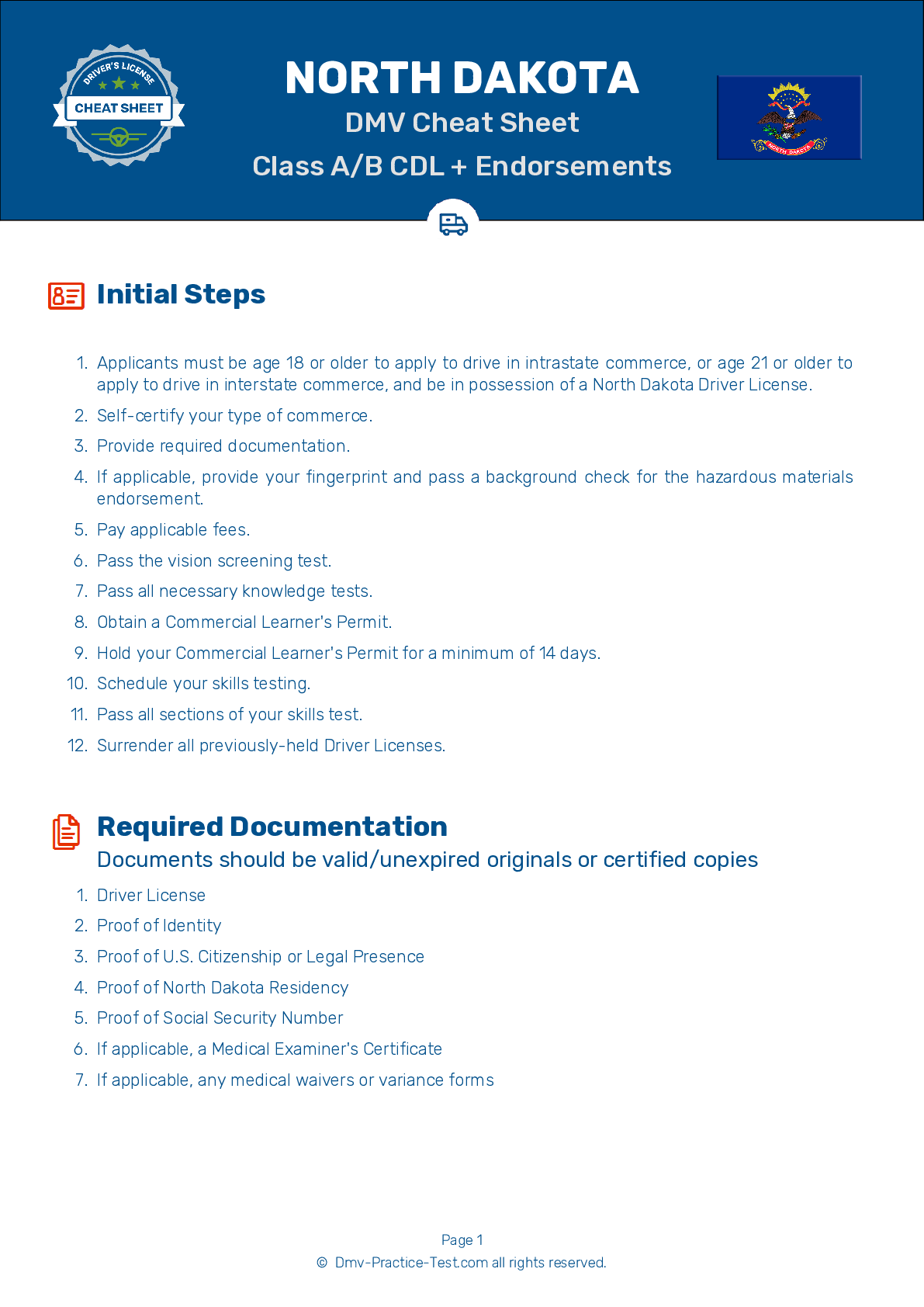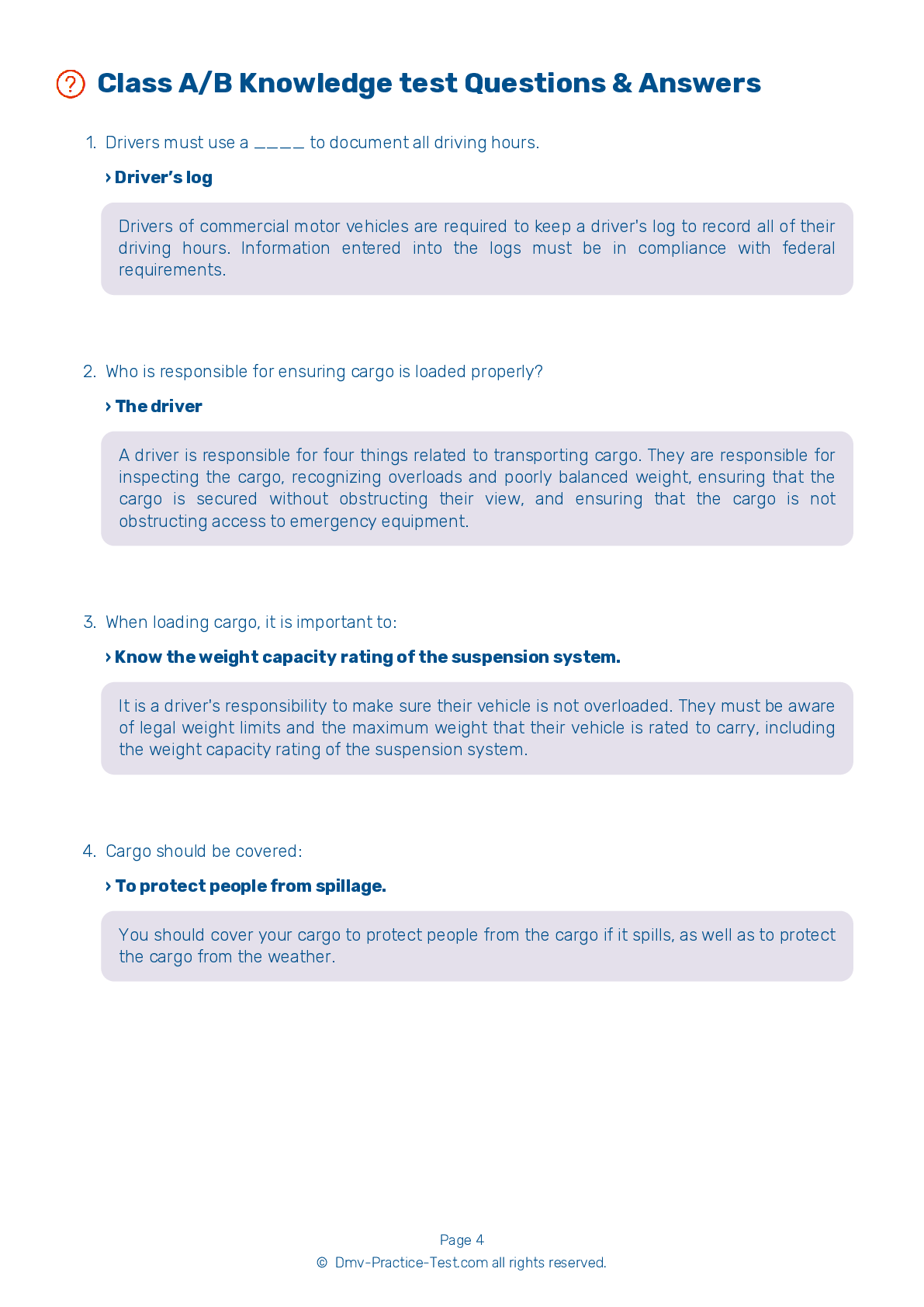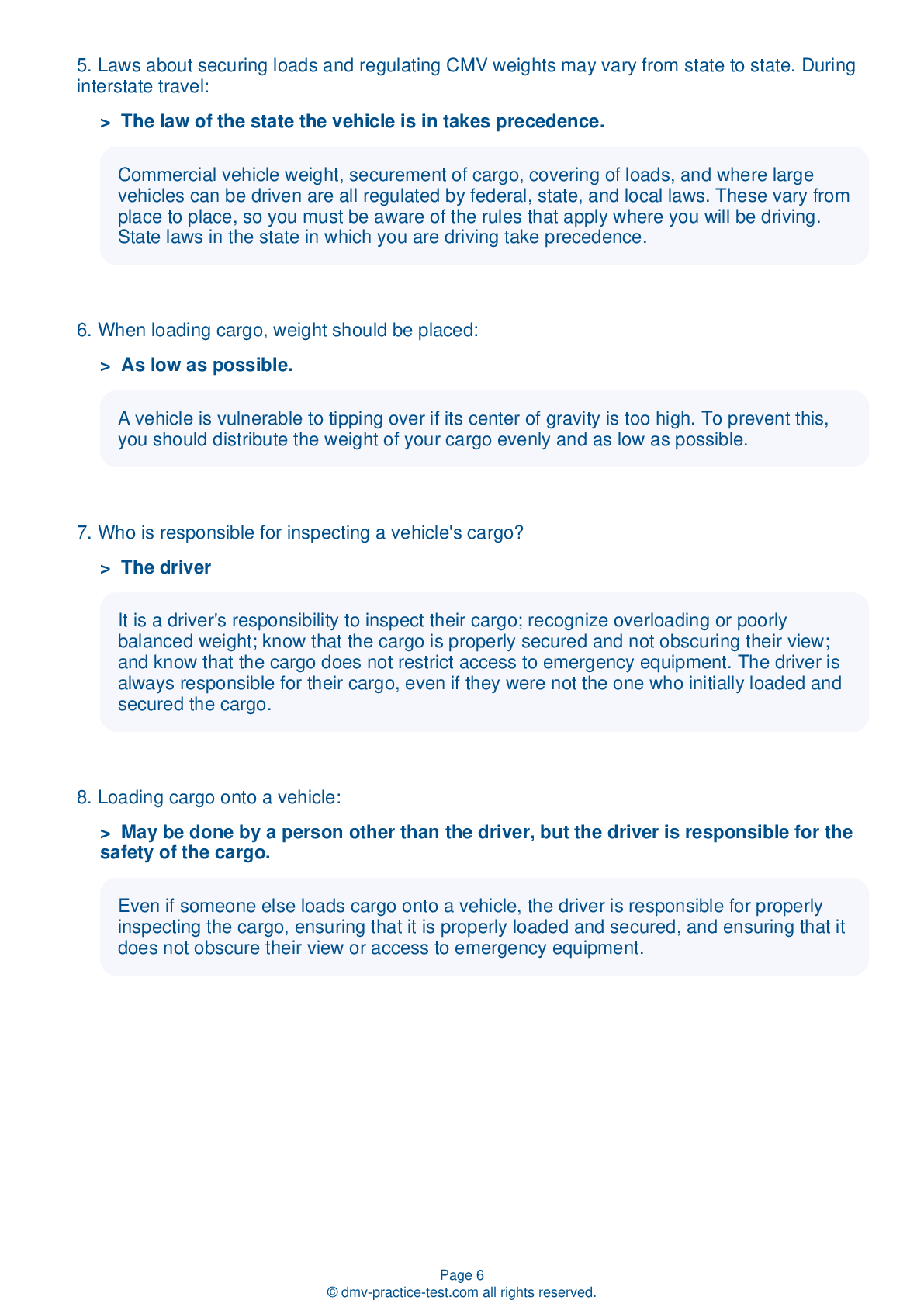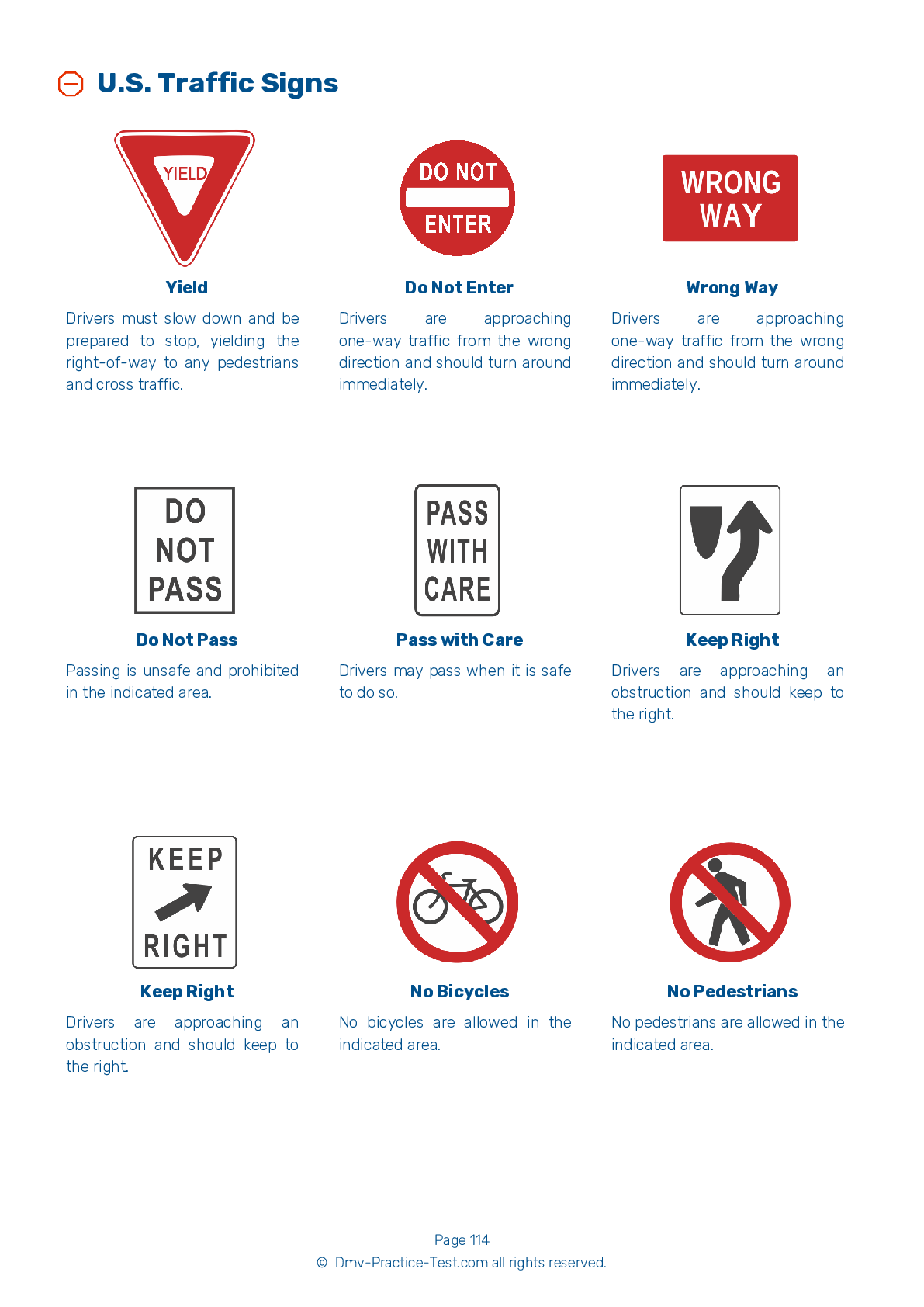Double Triple Test | North Dakota 2025 #1 Page 2 of 3
Train for FREE with our North Dakota CDL double triple practice test online. The official exam test consists of several obligatory parts, with all of them checking your knowledge of different blocks of road rules. If you need to obtain a ND CDL double triple license in 2025, practice as much as possible. Free sample tests published on our website will help you check and improve your knowledge and boost your grades. Please bear in mind that DMV requirements may vary from state to state.
8 . If you don't know if there is enough space for your vehicle to pass under a bridge, you should:
If you can't tell if your vehicle will have room to fit under a bridge or other overhead object, you should slow down and find an alternate route, if possible.
9 . The “crack-the-whip” effect for doubles and triples is:
The "crack-the-whip" effect can cause a trailer to turn over during a lane change. To avoid this phenomenon, drivers should make lane changes at slow, safe speeds. Double and triple combinations are the most vulnerable to this effect.
10 . If you’re driving and the ABS warning light comes on, it means:
Vehicles with Anti-Lock Braking Systems (ABS) have yellow malfunction lights to alert the driver if something is wrong with the braking system. If these lights activate, the driver may have lost ABS on one or more wheels.
11 . With your low beam headlights turned on, you should be able to see about ____ ahead of your vehicle.
Low beam headlights allow you to see about 250 feet ahead of your vehicle. When driving at night, adjust your speed so that you will be able to stop in the distance illuminated by your headlights.
12 . How can you avoid becoming drowsy on a trip?
Strategies to reduce the risk of fatigue while driving include getting seven to eight hours of sleep beforehand; scheduling trips for the hours during which you are normally awake; planning to take breaks during the trip; and exercising regularly.
13 . When driving a bobtail tractor, you should be aware that:
Bobtail tractors are tractors that are not attached to any semitrailers. When operating a bobtail, you should be aware that stopping can be difficult and that it will take a longer distance to bring the bobtail to a complete stop than it would a tractor attached to a loaded semitrailer.
14 . If you must stop on the side of a highway, how far behind your vehicle should warning devices be placed?
When stopping your CMV on the side of a highway, warning devices must be placed 10 feet, 100 feet, and 200 feet behind the vehicle.
See the exact questions that will be on the 2025 North Dakota DMV exam.
99.2% of people who use the cheat sheet pass the FIRST TIME
Lillian MCcranie explains how our CDL study guide was helpful in passing the exam and recommends it to everyone.
Cameron tells us how he purchased the CDL exam, and found it to be a useful tool which helped him pass the exam and find a job.



